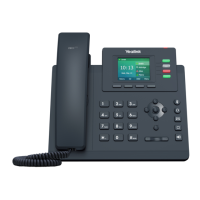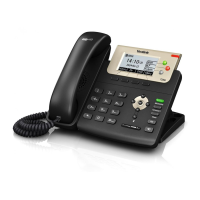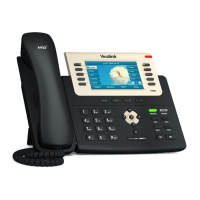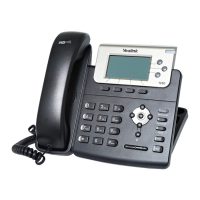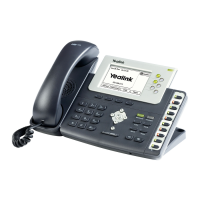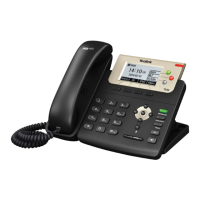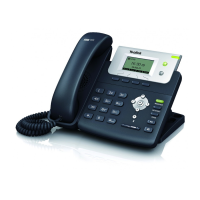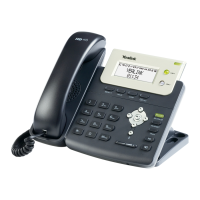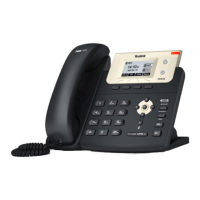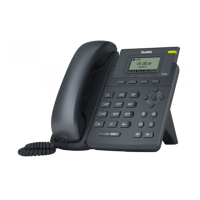Configuring Advanced Features
69
Simple Network Management Protocol (SNMP) is an Internet-standard protocol for
managing devices on IP networks. It is used mostly in network management systems to
monitor network-attached devices for conditions that warrant administrative attention.
SNMP exposes management data in the form of variables on the managed systems,
which describe the system configuration. These variables can then be queried by the
managing applications. The variables accessible via SNMP are organized in
hierarchies, which are described by Management Information Bases (MIBs).
The IP phone does not accept the SNMP request by default, because SNMP might
introduce unwanted security threats. The IP phone only supports the GET request of
SNMP. The SET or other requests are not supported. When enabling SNMP, you need to
specify which IP address may send SNMP requests to the IP phone.
The following table lists the basic object identifiers (OIDs) supported by the IP phone:
1.3.6.1.2.1.37459.2.1.1.0
The textual identification of the
contact person for the IP phone,
together with the contact
information.
1.3.6.1.2.1.37459.2.1.2.0
An administratively-assigned
name for the IP phone. If the
name is unknown, the value is a
zero-length string.
1.3.6.1.2.1.37459.2.1.3.0
The physical location of the IP
phone.
1.3.6.1.2.1.37459.2.1.4.0
The time (in milliseconds) since
the network management
portion of the system was last
re-initialized.
1.3.6.1.2.1.37459.2.1.5.0
The IP phone's firmware
version.
1.3.6.1.2.1.37459.2.1.6.0
The IP phone's hardware
version.
1.3.6.1.2.1.37459.2.1.7.0
1.3.6.1.2.1.37459.2.1.8.0
The IP phone’s MAC address.
1.3.6.1.2.1.37459.2.1.9.0
The IP phone’s IP address.
1.3.6.1.2.1.37459.2.1.10.0
The version of auto
provisioning.
